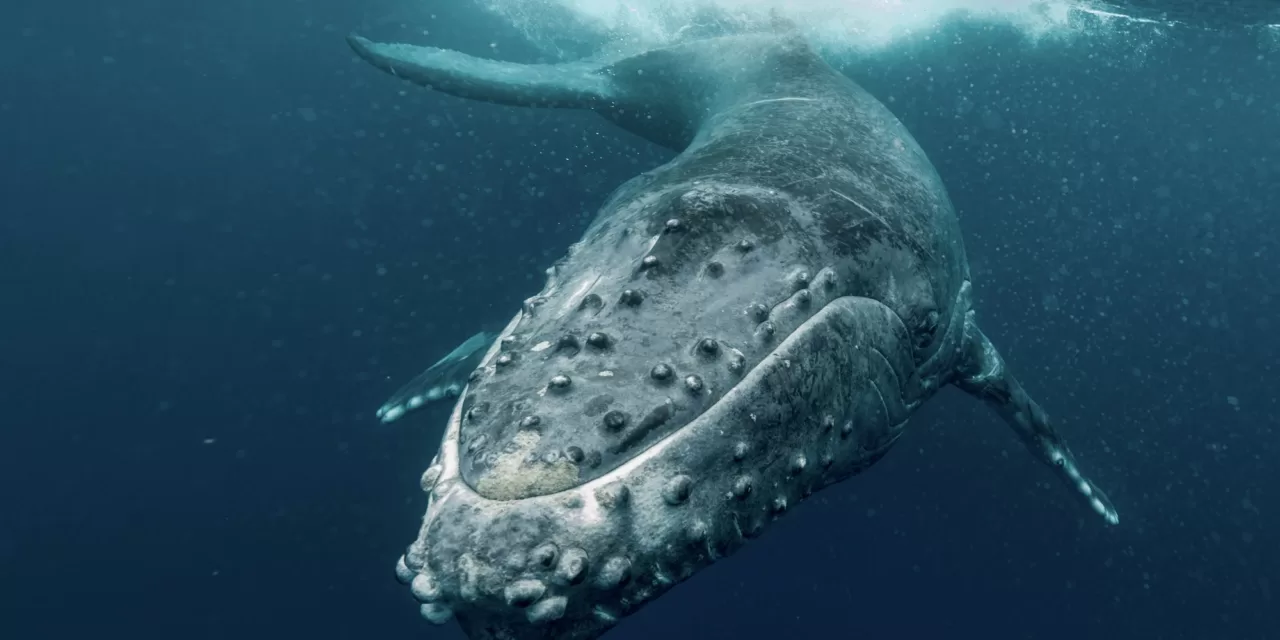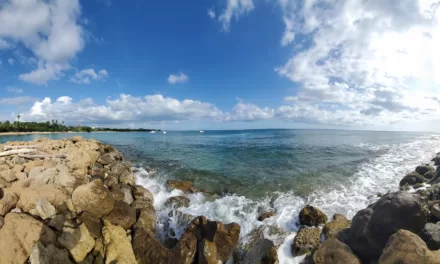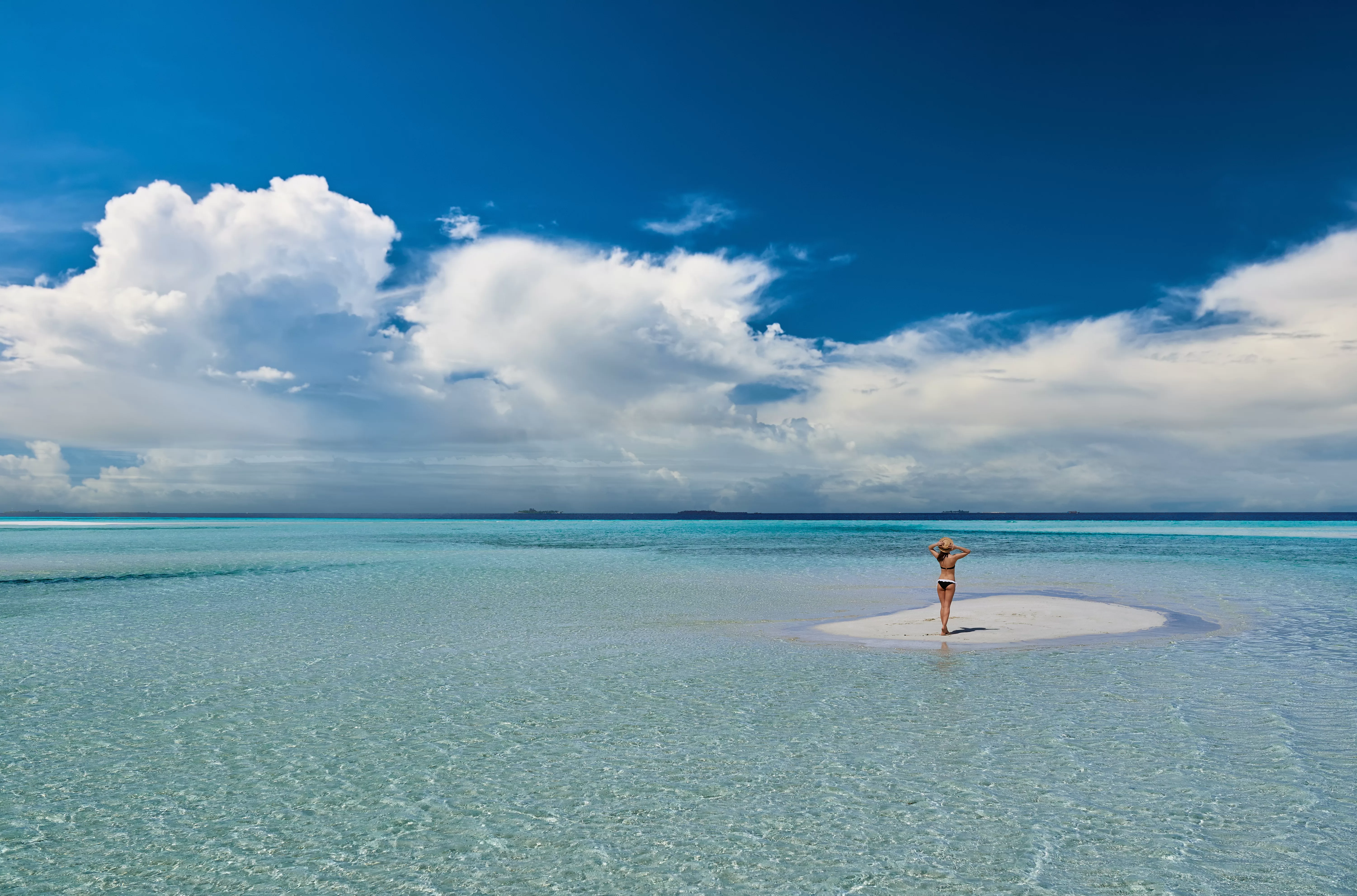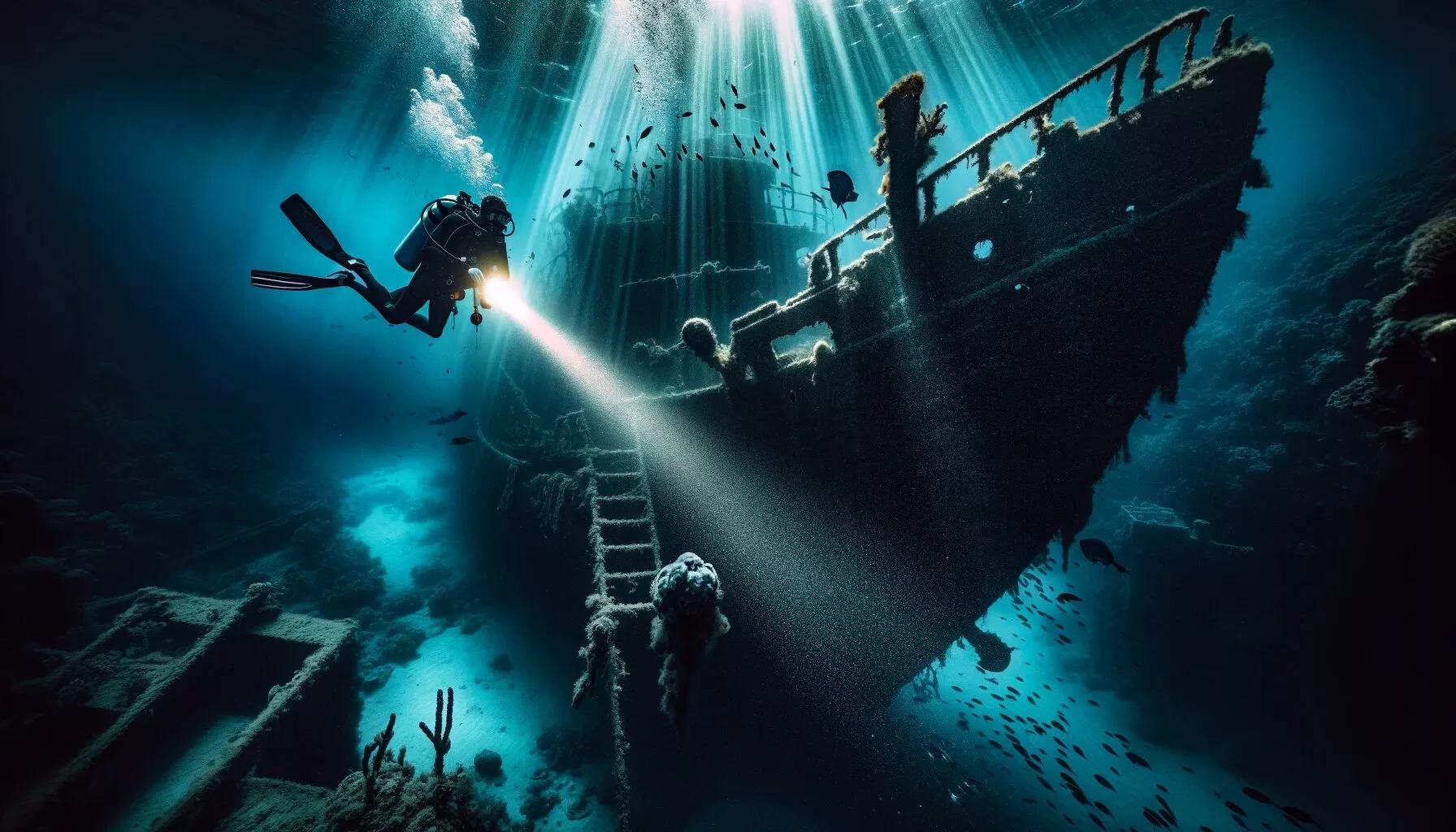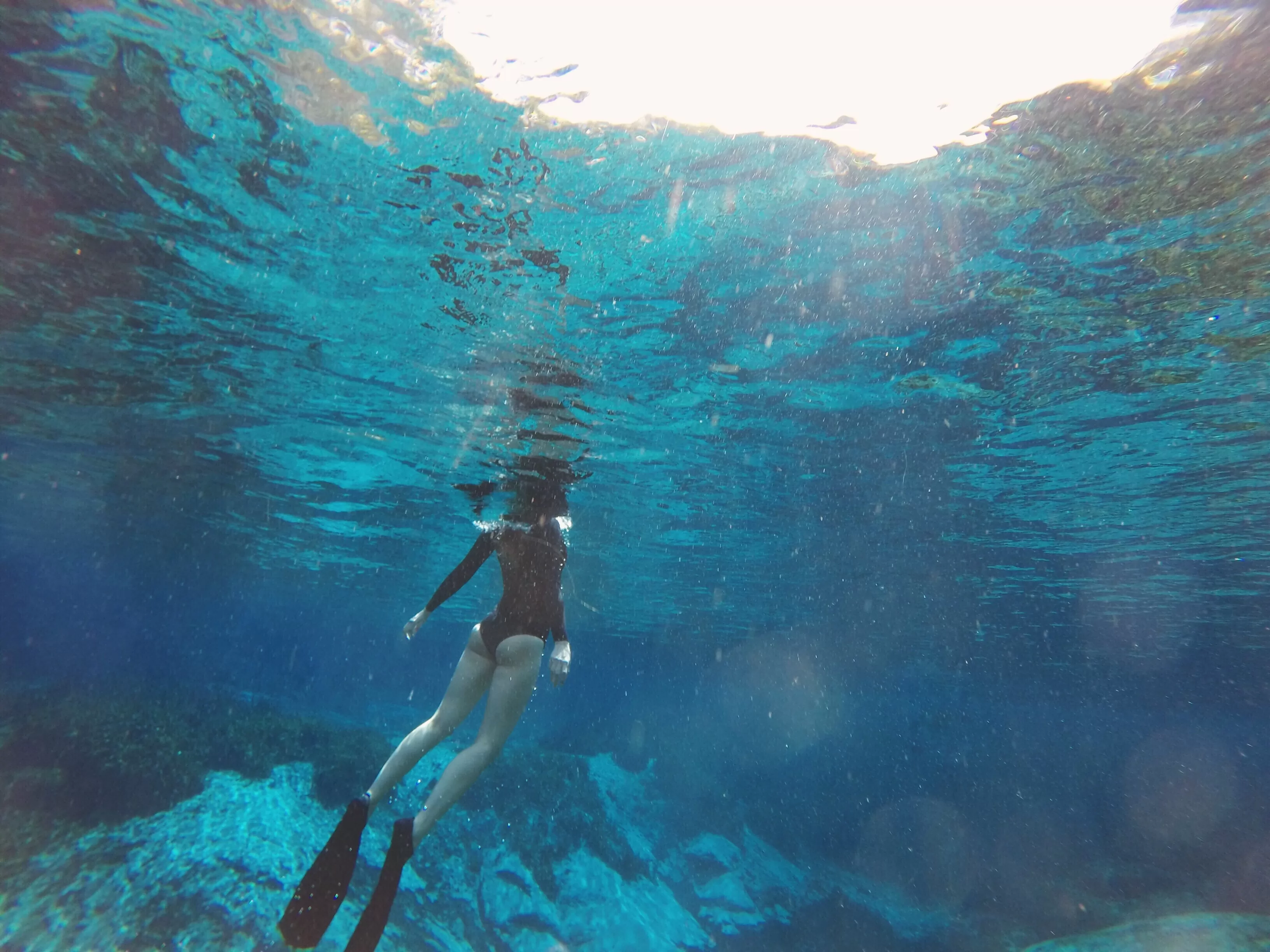Hey there, fellow ocean enthusiasts! Let’s dive into the world of whale watching in Puerto Rico, where the ocean is more than just a pretty face—it’s a stage for some of the most majestic creatures on Earth. I’m coming to you from Rincón, the surfing capital that turns into a whale-watching wonderland faster than you can say “Is that a tail?!”
Now, if you’re wondering when to pack your binoculars and head to this tropical paradise, circle January to March on your calendars. This is when the humpback whales swing by Puerto Rico on their annual winter retreat. It’s like they’re on vacation, and we’re just living in their world.
You might be asking, “What’s on the whale menu?” Well, the star of the show is the humpback whale, known for their spectacular breaches and soulful songs. But keep your eyes peeled; the ocean here is brimming with surprises, and you might catch a glimpse of other marine VIPs.
The Magic of Whale Watching in Puerto Rico
Puerto Rico isn’t just another spot on the map; it’s a VIP lounge for whale watching. Nestled in the warm waters of the Caribbean, this island is like a magnet for whales, especially the humpbacks, who come here to chill, mate, and show off their acrobatic skills. It’s the underwater equivalent of a reality TV show, and trust me, you want front-row seats.
Humpback Whales and Their Migration Patterns
Humpback whales are the divas of the sea, migrating up to 16,000 miles every year from their feeding grounds in the cold, nutrient-rich waters to the warm Caribbean seas to breed and give birth. It’s their version of “winter in the Caribbean,” and honestly, who can blame them? The waters around Puerto Rico become a nursery, a stage, and a runway for these magnificent creatures, offering us a glimpse into their lives.
Other Marine Life Encountered During Whale Watching Tours
While humpbacks steal the spotlight, let’s not forget the supporting cast. The waters around Puerto Rico are teeming with a variety of marine life. From playful dolphins tagging along with the boats to the elusive manatees grazing in the shallows, it’s a regular marine blockbuster. And let’s not overlook the turtles, gliding gracefully under the waves, or the myriad of tropical fish that add a splash of color to the blue canvas of the Caribbean.
So, grab your cameras, folks, and prepare for an unforgettable adventure where the whales are the stars, and the Caribbean Sea is their stage. Living in Rincón has its perks, and being able to share this magical experience with you is definitely at the top of the list. Stay tuned for more tales from the deep as we explore the best spots to witness these majestic creatures in their natural habitat.
Best Locations for Whale Watching in Puerto Rico
Rincón: The Whale Watching Capital
Ah, Rincón, my beloved hometown and the undisputed champ of whale watching in Puerto Rico. It’s like the whales got together and decided, “Yep, this is the spot.” From December through April, these giants of the sea come to flaunt their stuff, turning the coastline into a live-action Nat Geo special.
Prime Spots in Rincón for Shore-based Watching
- El Faro Park: Grab an ice cream, find a spot on the grass, and keep your eyes on the horizon. The lighthouse area offers panoramic views, making it perfect for spotting whales with the naked eye or a pair of binoculars.
- Domes Beach: Famous for its surf, Domes also serves up some serious whale watching. The beach’s elevation gives you a clear line of sight—ideal for those Instagram-worthy breach shots.
Recommended Boat Tours
If you’re looking to get up close and personal, there are several boat tours in Rincón that specialize in whale encounters. These tours offer the unique experience of seeing whales in their natural habitat, and if you’re lucky, you might even hear their haunting songs through hydrophones.
Isabela: Scenic Views and Whale Encounters
Isabela, with its stunning cliffs and pristine beaches, is another hotspot for whale enthusiasts. The vibe here is a bit more laid-back, but the whale action is anything but.
Key Locations for Sightings
- Playa Jobos: Not only great for surfing, but its high vantage points also make it a fantastic place for spotting whales. Plus, the sunsets here are to die for.
- Montones Beach: A quieter option, Montones Beach offers peaceful surroundings for those looking to enjoy nature’s show without the crowds.
Tips for Visitors
- Early Morning Magic: For the best chances of sightings, aim for early morning when the sea is calm, and the whales are active.
- Stay Hydrated: It’s easy to get lost in the excitement, but remember to drink water and protect yourself from the sun.
Other Notable Spots
- Aguadilla and the Northwest Coast: Known for its beautiful beaches and surf spots, Aguadilla also offers promising whale watching opportunities, especially from the Punta Borinquen area.
- Vieques and Culebra: For those seeking a more secluded experience, the islands of Vieques and Culebra provide a serene backdrop for whale watching, away from the main island’s hustle.
Planning Your Whale Watching Adventure
Best Time of Year to Go Whale Watching in Puerto Rico
The peak season for whale watching in Puerto Rico is from January to March. This is when the humpback whales are most active and visible near the coast.
Tips for Booking a Whale Watching Tour
- Research is Key: Look for tours with great reviews and responsible practices. Your tour should respect the whales’ space and contribute to conservation efforts.
- Eco-friendly is the Way to Go: Choose providers that prioritize the environment and the well-being of the whales. This means keeping a respectful distance and not feeding or touching the wildlife.
What to Bring on Your Whale Watching Trip
- Binoculars: To catch those distant breaches and tail slaps.
- Camera: Because you’ll want to remember these moments forever.
- Sun Protection: Sunscreen, a hat, and sunglasses are your best friends.
- Water and Snacks: Stay hydrated and energized during your adventure.
- Seasickness Remedies: Just in case the ocean decides to get a bit too playful.
Embarking on a whale watching journey in Puerto Rico is an adventure that combines the thrill of the unknown with the sheer beauty of nature. Whether you’re watching from the shores of Rincón or aboard a boat off the coast of Isabela, the experience is nothing short of magical. So pack your bags, bring your sense of wonder, and prepare to be amazed by the majestic ballet of the humpbacks in the warm Caribbean waters.
It’s Whale Time
So, there you have it, my sea-loving friends—a glimpse into the world of whale watching in Puerto Rico, straight from your Rincón-based, flip-flop-wearing, ocean-obsessed travel blogger. Puerto Rico isn’t just another spot on the map; it’s a premier destination for anyone looking to witness the awe-inspiring beauty of whales in their natural habitat. And let’s not forget, this island paradise offers a treasure trove of marine biodiversity waiting to be explored.
I encourage you, with all the enthusiasm of a humpback whale breaching at sunset, to dive into the wonders of Puerto Rico’s waters. But as we embark on these aquatic adventures, let’s do so with respect and mindfulness, ensuring that our marine friends continue to thrive and grace us with their presence for generations to come. Grab your binoculars, slap on some sunscreen, and let Puerto Rico’s seas amaze you!
FAQs
1. When is the best time to see whales in Puerto Rico? The prime whale-watching season is from January to March, when humpback whales visit our warm waters.
2. What should I wear for a whale watching tour? Comfort is key! Opt for light layers, a hat, and sunscreen. Don’t forget non-slip shoes for boat tours.
3. How can I book a whale watching tour? Many local operators offer tours. Check online reviews and book in advance, especially during peak season.
4. Are there any eco-friendly whale watching tours? Yes, look for tours certified by environmental organizations or those emphasizing conservation and respectful practices.
5. Can I swim with the whales? For safety and conservation reasons, swimming with whales is not permitted on whale watching tours in Puerto Rico.
6. What types of whales can I see in Puerto Rico? Primarily humpback whales, but you might also spot other species depending on the season and location.
7. How close can we get to the whales? Regulations require boats to maintain a distance of at least 100 yards to avoid disturbing the whales.
8. Is whale watching suitable for children? Absolutely! Whale watching is a family-friendly activity that can inspire love and respect for marine life.
9. What else might I see on a whale watching tour? Dolphins, turtles, and various seabirds are common sights on these tours.
10. What’s the best way to photograph whales? Use a zoom lens and be patient. Burst mode can help capture that perfect breach or tail slap.
Embark on this incredible journey where the ocean comes alive with the song of the humpbacks, and let Puerto Rico’s natural beauty sweep you off your feet. Remember, each trip out to sea is a chance to marvel at one of nature’s most spectacular displays, and it’s right here, waiting for you in the warm Caribbean waters. Happy whale watching!
